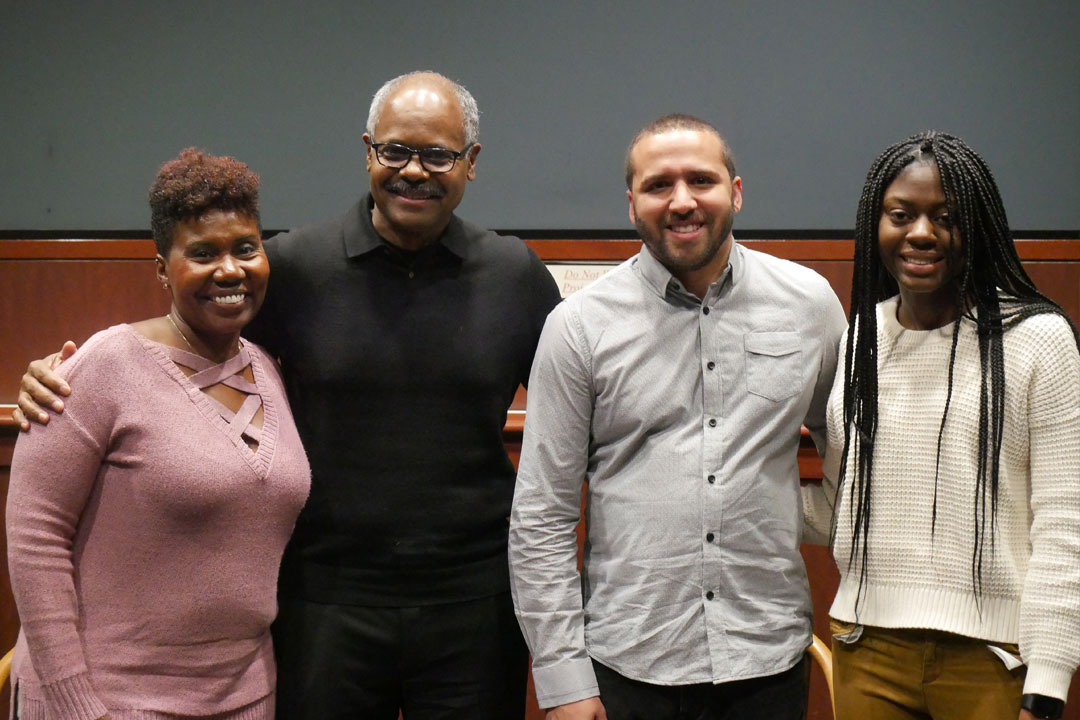By Lauryn Hill, JMC '19
The George Washington University’s chapter of the National Association of Black Journalists hosted a screening of the documentary “Whose Streets?” which gives an in-depth look into the lives of community members in St. Louis, Missouri, following the police killing of Michael Brown in August 2014.
The screening, which took place on Jan. 18, attracted many students and faculty members to the Marvin Center Amphitheater. A discussion with professional journalists followed the screening.
Dr. Imani M. Cheers, a professor in the School of Media and Public Affairs, moderated the discussion between panelists Jeffery Blount, an SMPA Shapiro Fellow and former director at NBC, and Washington Post reporter Wesley Lowery.
The documentary rapidly changed the mood among the audience members — laughter evolved into silent looks and exasperated sighs as moments of comic relief faded to scenes of violence.
The documentary not only depicts community-wide protests that were being suppressed by police, but also the way community members showed their children the black, universal reality of constantly being policed in an effort to get them involved in organizing and direct action.
“We are raising activists. If there is going to be any change, it starts with our children,” said Brittany Ferrell, Ferguson protest organizer interviewed in the documentary.
The post-screening discussion focused on the media aspect of the Ferguson protests, including the positive benefits of social media platforms such as Twitter and Facebook and the overwhelming absence of black executives in news organizations who have the power to ensure that coverage of events like Ferguson is fair and unbiased.
“There’s a new mentality, in many ways including social media, that is forcing the hand of traditional media to change,” said Blount. “We would not know so much about Ferguson if it was not for social media.”
Lowery, who reported on the protests that occurred in Ferguson, Missouri added that the power of social media “allowed you, and a reader or viewer, to feel and physically be everywhere. Everyone had their phones, everyone was documenting in real-time what was happening … it created a level of accountability that was different.”
Blount, who taught an SMPA course in 2017 about implicit bias in the media, discussed the “rise of video manipulation” and the importance of ensuring that the message of a news piece is not lost due to framing techniques.
“You can shoot an hour, two hours, three hours, four hours, five hours at Ferguson, and then you go into the room, and it’s a minute-and-50-second piece. Who decided what got into that minute-and-50-second piece?” Blount said. “That’s why we need more people who can argue the point during the decision-making time when we’re deciding what the focus of that piece is going to be.”
The full discussion is available on SMPA’s Facebook page.


